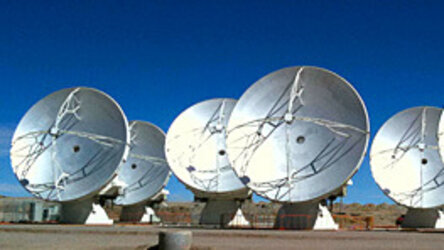Beam-forming network for an array antenna and array antenna comprising the same
| 597 - Abstract: |
| The European Space Agency (ESA) is interested in licensing a Beam-Forming Network (BFN) for an array antenna, and to an array antenna comprising such a beam-forming network. The novelty of this network lies on the capability to outperform state-of-the-art architectures in terms of the number of High Power Amplifiers (HPAs), and in terms of scan loss performances within field of view. |
Description
The invention is based on the overlapping sub-arrays concept, and in particular on a three layers hierarchical partition of a regular array, or lattice, of antenna elements.
According to the invention, the array is firstly partitioned in a plurality of overlapping contiguous non-overlapping clusters of antenna elements (NOSAs), and secondly partitioned in a plurality of overlapping sub arrays (OSAs), each overlapping sub-array comprising a subset of all the non-overlapping sub-arrays.
Conventional state-of-the-art architectures for active arrays require a number of HPAs and Weight Elements (WEs) equals to the number of antenna elements (AEs), and suffer from some drawbacks when used in practical applications:
- Most prior art BFNs are only designed for linear arrays.
- Some prior art BFNs are not lossless from the point of view of Microwave Circuit Theory.
- Other prior art BFNs are theoretically lossless but exhibit high complexity.
The invention aims at providing a BFN free from all or at least some of these drawbacks, i.e. suitable for both linear and planar arrays, theoretically lossless, with a simple structure and a limited number of control elements, yet providing a high level of flexibility and scalability and satisfactory radiation performances.
Innovations and advantages
The technology offers a simple structure and a limited number of control elements and HPAs, yet providing a high level of flexibility and scalability and satisfactory radiation performances.
In addiction, the novelty of this network lies on the capability to outperform state-of-the-art architectures in terms of scan loss performances within field of view.
Domains of application
Typical multi-beam Applications comprise telecommunication satellites generating multi-beam coverage’s and ground Systems like: ground vehicular and aeronautical teleccomunication terminals, antennas for mobile systems base stations, etc.















 Germany
Germany
 Austria
Austria
 Belgium
Belgium
 Denmark
Denmark
 Spain
Spain
 Estonia
Estonia
 Finland
Finland
 France
France
 Greece
Greece
 Hungary
Hungary
 Ireland
Ireland
 Italy
Italy
 Luxembourg
Luxembourg
 Norway
Norway
 The Netherlands
The Netherlands
 Poland
Poland
 Portugal
Portugal
 Czechia
Czechia
 Romania
Romania
 United Kingdom
United Kingdom
 Slovenia
Slovenia
 Sweden
Sweden
 Switzerland
Switzerland


























